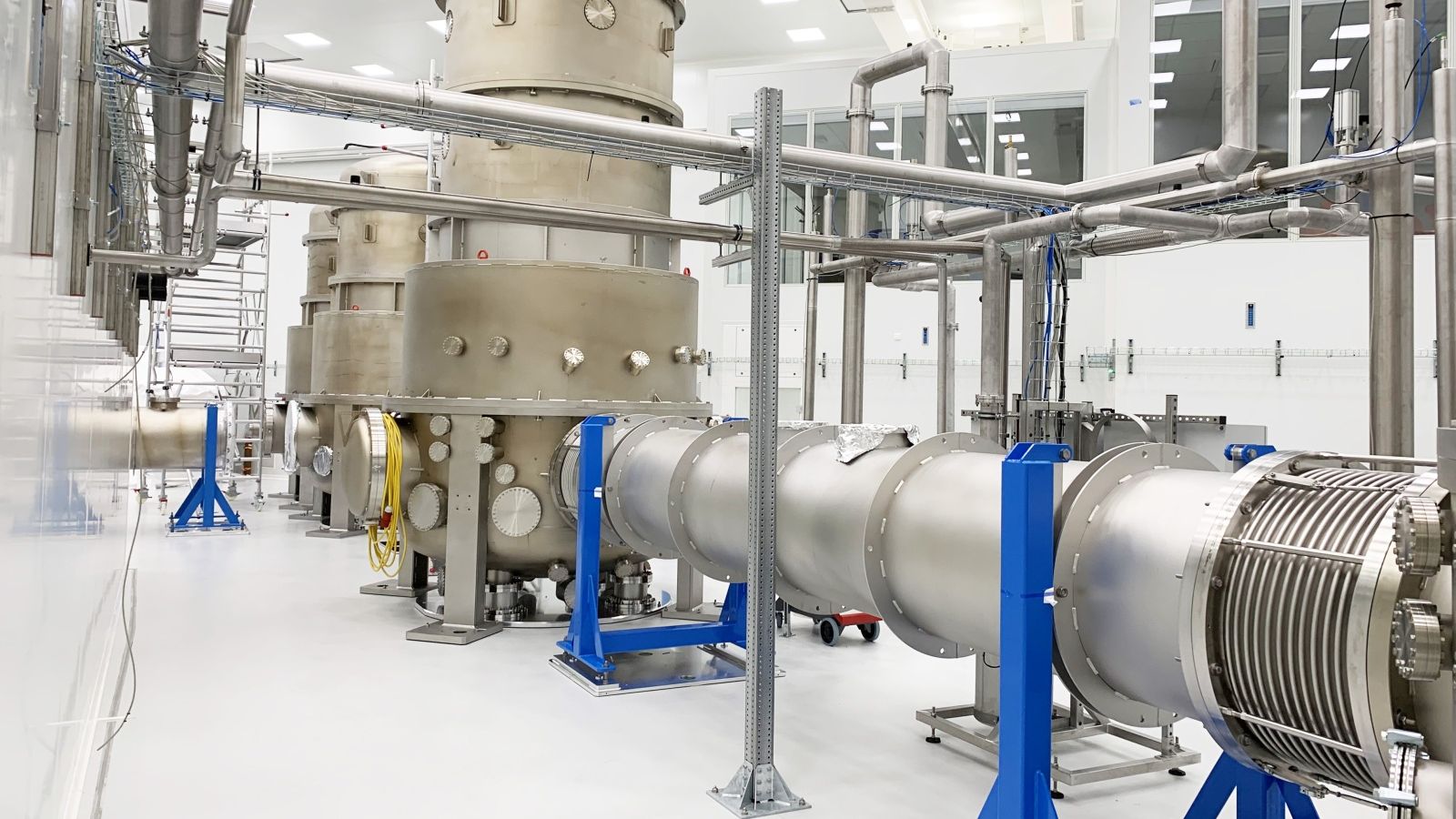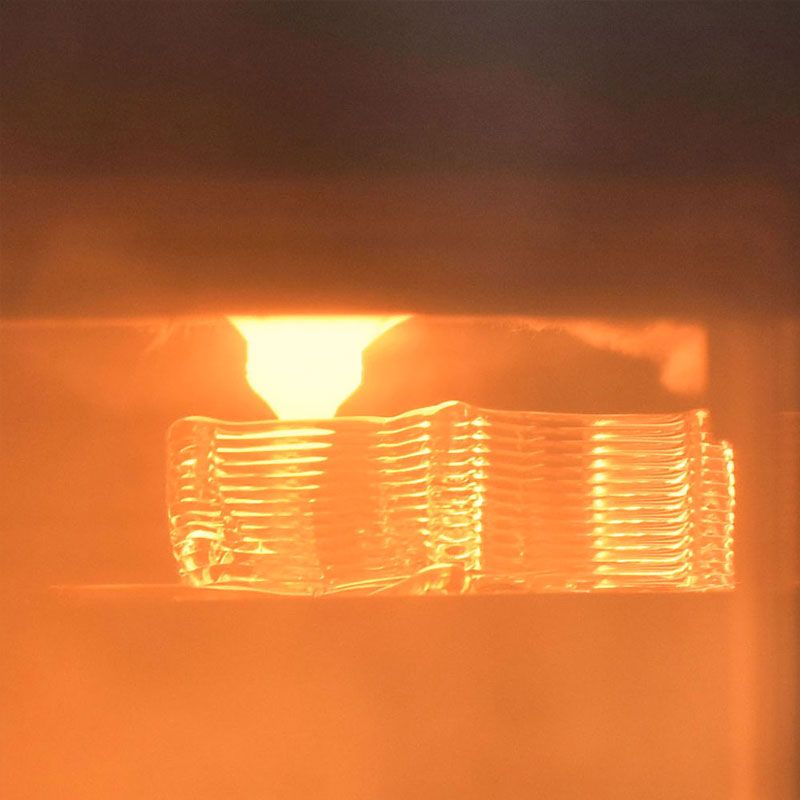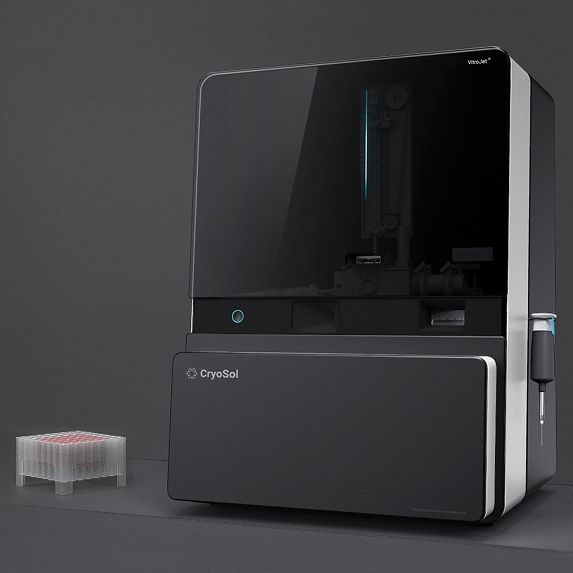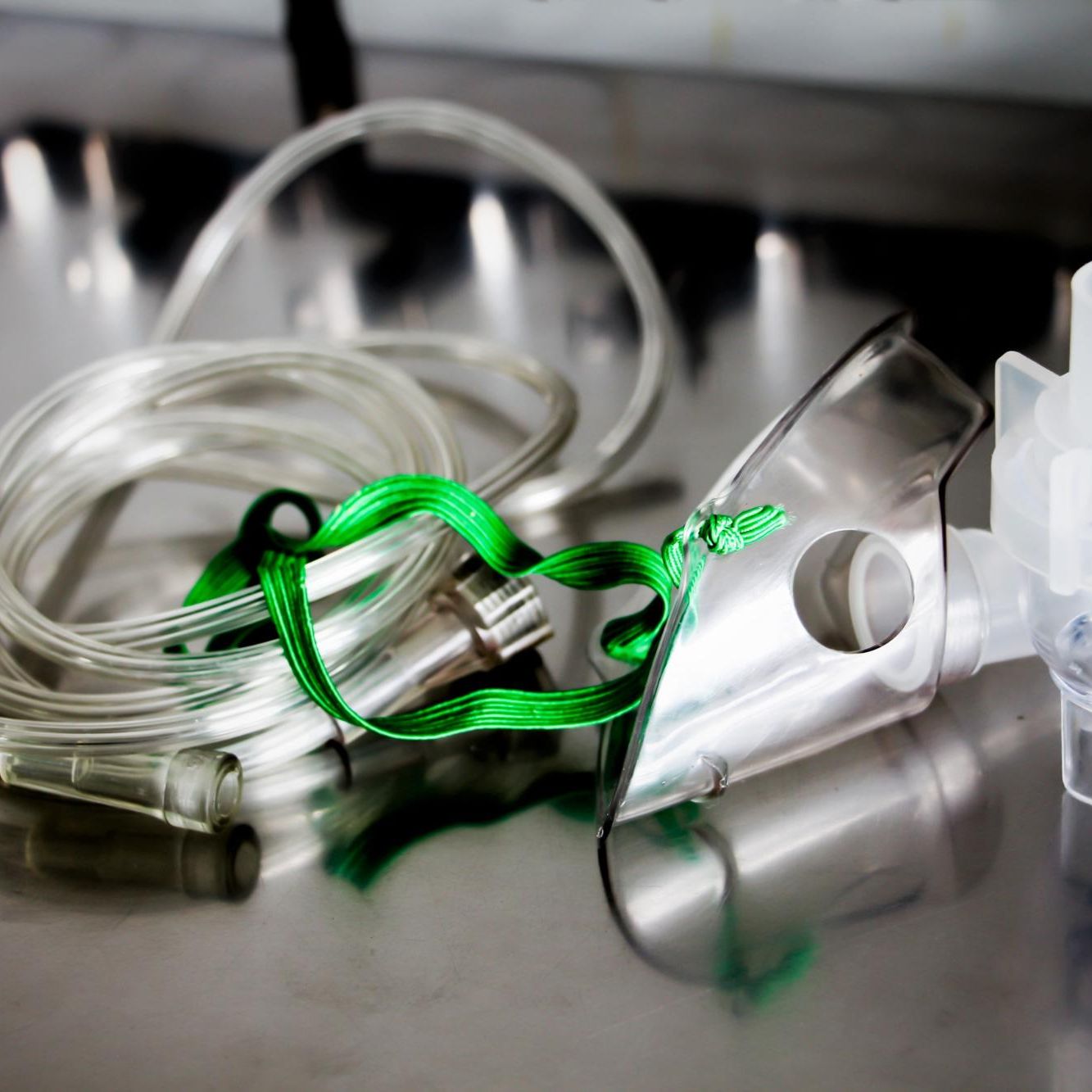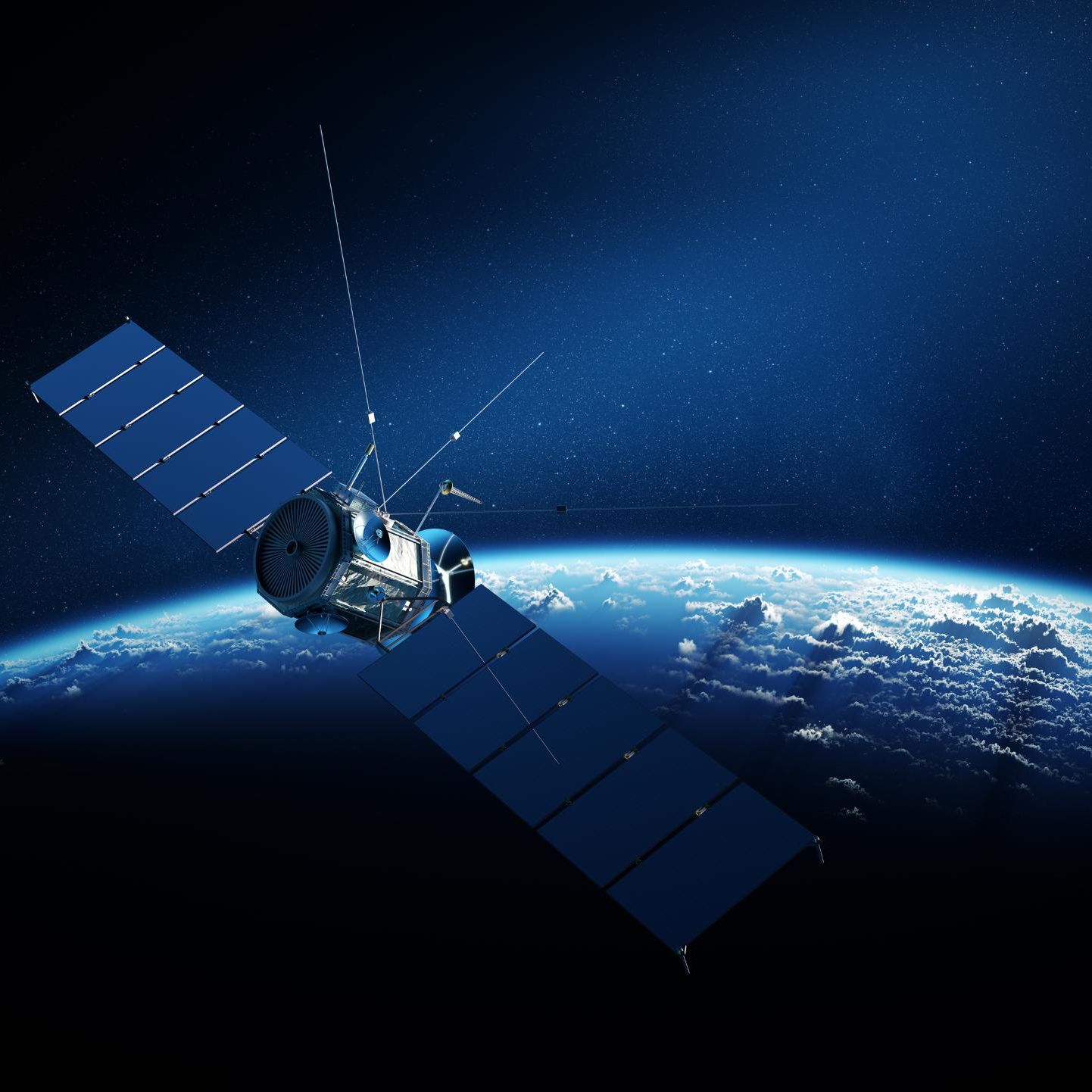
highlights
• 10 Kelvin cold-stage
• multi-stage sorption (Ne-H2-He) compressor
• <32 nm peak to peak maximum vibration
• ultra low thermal drift
multistage sorption-based Joule-Thomson cryocooler.
Joule-Thomson (JT) cold stages, driven by a sorption compressor, offer vibration-free performance. These type of compressors use adsorbent materials (e.g. activated carbon) and passive valves to control gas flow, resulting in a nearly continuous gas flow through the cold stage. An important aspect for the Einstein Telescope is that they contain no moving parts, ensuring no interference with the vibration sensitive measurements with an long, maintenance free operational lifespan.
Verification Einstein telescope pathfinder
Demcon kryoz develops and analyses the Einstein Telescope thermal system which uses sorption-based Joule-Thomson cryocoolers. The three-stage cooler, utilizing neon, hydrogen and helium, is able to achieve 10 Kelvin. The design will be first implemented in the Einstein Telescope Pathfinder demonstrating the feasibility of the Joule-Thomson cryocooler and benchmark it against other alternatives.
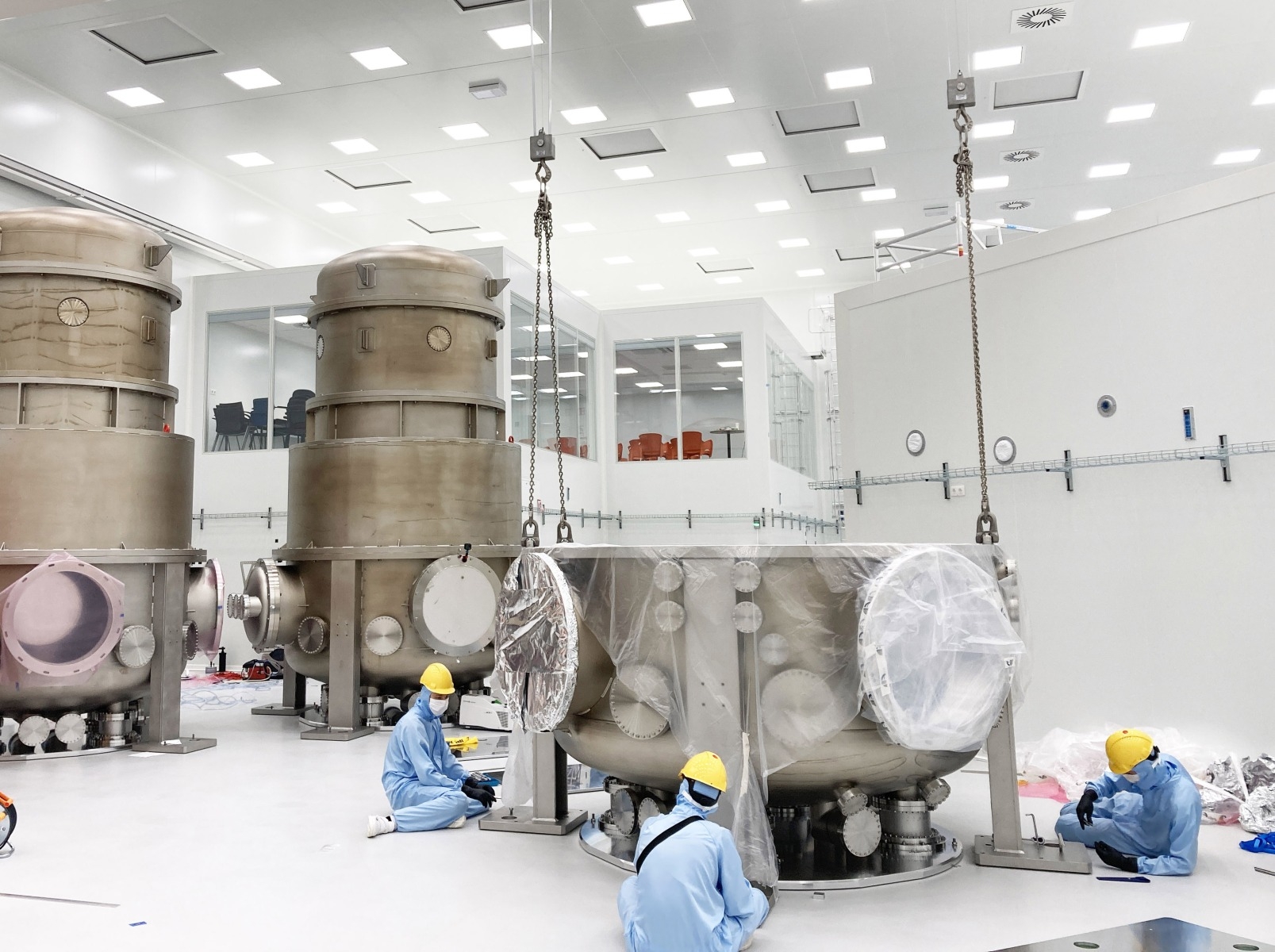
"large system cryocooling."
Creating a multi-stage cryocooler for a cutting edge research facility such as the Einstein Telescope is very challenging. Especially when working with a large amount of interfaces and the extreme requirements on vibrations. Using our broad experience and knowledge on JT-cryocooling, we designed, simulated and analyzed the complete cryocooling system. In the near further, we will perform verification tests in the Einstein Telescope Pathfinder at the University of Maastricht.


